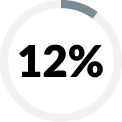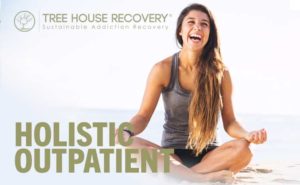Understanding rehab success rates is critical when seeking treatment. It is important to understand industry norms and learn how to ask the right questions so that you can pick the best treatment and get the best results.
Tree House Recovery offers effective, holistic treatment for addiction and co-occurring mental health concerns. Our individualized approach to care and our highly trained staff ensure that you or your loved one will get the best possible care. Reach out to our team at 910-812-1728 today to learn more and to access our addiction resources.

Defining Substance Use Disorder Treatment
Defining rehab is not as simple as it should be. Beyond requiring a license to operate, there are no universal requirements for operating a rehab. And the requirements for this license also differ from state to state. In short, there is little regulation in the rehab industry, which makes defining it difficult. Treatments and methods can differ from facility to facility [1] [2].
Tree House Outpatient Completion Rates
VS
Industry Standard Outpatient Completion Rates [1]
What Do Rehab Success Rates Mean?
There is no standard or universal metric for defining successful treatment in rehab. This makes the term “successful” difficult to define in the rehab industry, and as a result, different facilities may define or measure their success differently. For instance, success according to one program may just be finishing their program. For others, it could be remaining sober for a certain amount of time after treatment [3] [4].
It’s also easy for facilities to boast high success numbers and let people infer on their own what success actually means. One example of this could be relapse rates. Some may argue that sobriety requires complete abstinence from all substances. Others would say that relapsing for one day doesn’t count as a relapse. Of course, the way a facility chooses to define relapse is going to affect its addiction recovery success rates.
Making Sense of Rehab Success Rates:
When choosing a rehab, it’s important to know its success rate. But these numbers may be misleading without the right questions. For instance, if a program is 90% successful, how are they defining success? Or if 90% of graduates stay sober, how are they defining sober? Would this program consider a former heroin addict using prescribed methadone sober?
When determining if a program is effective there are several questions you can ask:
- What percentage of people finish the program?
- What percentage of people stay sober for one year after?
- What is your program’s definition of “sober”?
Tree House Recovery's Addiction Recovery Success Rates
Research suggests the best kind of treatment is the kind that helps you rebuild yourself into someone who has nothing to gain from substances. That means finishing the program and continuing the physical, mental, and social practices gained in treatment that helped you remake yourself.
GRADUATION RATE:
Long-term sobriety isn’t about white-knuckling it for 30, 60, or 90 days. It’s about developing a new relationship with substances and learning how to live a satisfying life without. It requires building a brand new lifestyle that you love and that is capable of supporting your sobriety. Building that lifestyle starts with a positive and successful treatment experience that you see all the way through.

GRADUATE
88% of people who enter Tree House Recovery successfully finish the program.
VS
Why Is Tree House's Approach More Effective?
The Tree House approach considers drug abuse a symptom of underlying health concerns. In addition to using the best evidence-based therapies, Tree House focuses on helping clients build a healthy foundation—physically, mentally, and socially. As clients build this healthy foundation, they see and feel empowering changes in their lives. The result is a more engaging experience based on growth and empowerment vs. a program focused on limitations and powerlessness. In short, Tree House focuses on health rather than sickness—clients experience real progress and want to stay. See some of the Tree House health targets below for a deeper understanding.
MENTAL AND EMOTIONAL SUCCESS RATES

EMOTIONS
98% of our graduates report the ability to regulate and address negative emotions.

MINDFULNESS
96% of our graduates report an increased ability to use self-reflection to make better decisions.

DECISIONS
98% percent of graduates report improved ability to base decisions on past and present insights
PHYSICAL HEALTH SUCCESS RATES

FITNESS:
86% of our graduates continue the personal fitness plans from Tree House.

ENERGY:
88% of graduates report daily above average energy levels when maintaining habits from the program.

NUTRITION:
79% of graduates maintain the healthy diets they learn.
SOCIAL HEALTH SUCCESS RATES

EMPLOYED
89% of Tree House graduates currently have a full-time job.

IN SCHOOL
12% of graduates go on to attend school full-time.

CONNECTED
90% of graduates stay connected to their Tree House teammates.
Relapse Rates After Rehab
- People who participate in treatment and AA in their first year of attempted sobriety are less likely to relapse
- Seeking AA or treatment in a delayed fashion after the first year of attempted sobriety is “not associated with a higher likelihood of remission, or less chance of relapse.”
- About 40% of people relapse after rehab, compared to 60% who relapse after no rehab.
Length of Treatment and Relapse Statistics
According to a peer-reviewed study by the National Institute of Drug Abuse, the duration of treatment is an important factor in decreasing relapse as well.
The magic number is at least 90 days. The study looked at 1,605 cocaine users who completed treatment. 35% of people who did less than 90 days reported cocaine use the following year, compared to 17% of people who completed at least 90 days of treatment [3].
Every patient at Tree House Recovery receives 90 days minimum of treatment. Most patients stay the full five months.
Spontaneous Recovery
Spontaneous recovery (someone who achieves sobriety without using any treatment or rehab) is a challenging subject in the rehab community. It has strong connections with the outdated philosophy that addiction is a moral failing or personal shortcoming and that one could simply stop their addiction any time they wanted. Even though the most recent scientific evidence shows that addiction is a brain disorder, not a choice, there are people who achieve sobriety without rehab. How likely is spontaneous recovery?
A 1986 study by Stall and Biernacki argued that rates of spontaneous recovery can range anywhere from 4% to 59% of people who struggle with addiction. According to a 2019 peer-reviewed study in the Journal of Substance Abuse Treatment, this range is so large because different studies use different criteria to define “addiction,” “treatment,” and “remission” [5] [6].
- As the severity of addiction increases (meaning more diagnostic criteria for alcohol use or substance use disorder are met) the probability of a successful spontaneous recovery decreases.
- If “treatment” is defined as only rehab, the likelihood of resolving addiction without treatment decreases. But chances of spontaneous recovery increase if treatment is expanded to include “other professional helpers, e.g., physicians and other medical personnel, psychiatrists, psychologists, social workers, clergy, etc.”
- When “remission” is defined as complete abstinence from substances, the success of spontaneous recovery decreases.
- When “remission” is defined as four or more years of sobriety, the number of people in remission due to spontaneous recovery decreases.
Conclusion: People who meet fewer criteria for substance use disorder may not need rehab to achieve sobriety if they have access to other treatment resources. However, these individuals will be less likely to stay sober long-term and more likely to try an “every once in a while” approach to substance use. Depending on the substance in question, (particularly opioids) this can be dangerous.
What Does Treatment Success Require?
- Perception of Sobriety and Addiction: Sobriety is something the person believes they need and chooses to live. The best treatment success rates require what one researcher calls a “cognitive reorganization,” meaning that treatment must guide a person to see their use as problematic and motivate them to genuinely adopt the identity (thoughts, behaviors, and beliefs) of sobriety. Evidence suggests that external motivators like guilt are not as effective as internal motivators in preventing relapse.
- Ongoing lifestyle changes moving the person away from their habit. These changes can include “new interests, career, leisure activities and friends not connected with the habit.” These lifestyle changes help add substance to a person’s new sober identity, but they create stakes for sobriety since relapse would likely come at the cost of these new elements that the person cherishes.
Find Success in Rehab at Tree House Recovery
While the success of addiction treatment depends on multiple factors, treatment at Tree House Recovery gives you the best chance to build a foundation for long-term sobriety. During your time in our rehab program, you will develop the skills and knowledge to help you on your journey. Reach out to our team at 910-812-1728 today to learn more.

Author
Derek Swain: Addiction Writer
READY FOR CHANGE?
START YOUR JOURNEY TODAY!
References:
Weisner C, Mertens J, Parthasarathy S, Moore C, Lu Y. Integrating primary medical care with addiction treatment: a randomized controlled trial. JAMA. 2001;286(14):1715-1723. doi:10.1001/jama.286.14.1715.
You can access the article through PubMed here: https://pubmed.ncbi.nlm.nih.gov/11594896/
- https://www.dhcs.ca.gov/Documents/DHCS-AOD-Certification-Standards-2.7.2020.pdf
- https://www.latimes.com/archives/la-xpm-2008-nov-10-he-addiction10-story.html
- https://www.ncbi.nlm.nih.gov/pmc/articles/PMC1976118/
- https://facesandvoicesofrecovery.org/blog/resource/addiction-recovery-without-treatment/
- https://pubmed.ncbi.nlm.nih.gov/3710636/
- https://ajph.aphapublications.org/doi/pdfplus/10.2105/AJPH.86.7.966
- https://www.ncbi.nlm.nih.gov/pmc/articles/PMC7505137/

